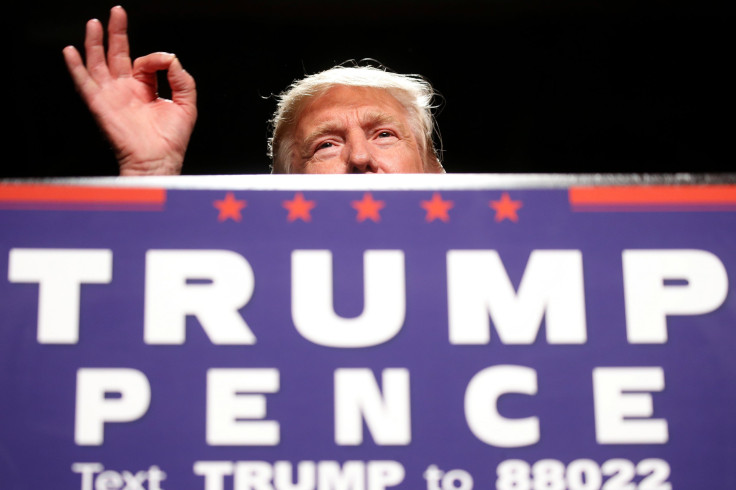Does Donald Trump Actually Have A Chance? What He Needs To Do To Win Over Hillary Clinton

Republican presidential nominee Donald Trump has markedly improved his chances at taking the White House over the past week or so. But with just seven days until Election Day Tuesday, he still needs a series of fortuitous breaks to upset the front-runner, Democrat Hillary Clinton.
Trump has narrowed an about 6-point lead nationally to just 2.5 percentage points, according to the Real Clear Politics average of polls. National polls are a good barometer of the direction in which the race is moving, but what really matters are the numbers at the state level. And while Trump is chipping away, he needs some big last-minute gains to have a realistic path to 270 electoral votes, which is the magic number needed to clinch the presidency. The GOP nominee has a better path forward than he did about a week ago, but it remains narrow. By the Associated Press' count, Clinton is either safely ahead or leading in enough states to secure 278 electoral votes.
Most, if not all, paths for a Trump presidency begin with winning Florida. He absolutely needs its 29 electoral votes. A number of recent polls had the GOP nominee ahead in the Sunshine State, a flip from surveys preceding those that had the former secretary of state leading. Florida is effectively a toss-up right now, according to the polls-only forecast from data-driven website FiveThirtyEight.
But winning Florida won't be enough. Trump also needs to take all of the states that seem to remain toss-ups, most notably Ohio, worth 18 electoral votes. But again, winning Florida and Ohio alone won't be enough. A Washington Post analysis noted that Trump needs to win all of their current toss-up states — Ohio, Florida, Arizona and Utah — and then still scrap together 26 more electoral votes. That's where things get especially tricky for the GOP nominee.
Trump's best shot at taking some two dozen more electoral votes probably lies with wins in North Carolina (worth 15 electoral votes) and/or Pennsylvania (worth 20 electoral votes). According to Real Clear Politics averages, Clinton is up 2.6 percentage points in North Carolina and 6 percentage points in Pennsylvania. A Republican polling firm did show that Trump was up 2 points in North Carolina and down 2 points in Pennsylvania, but most prediction-makers have both states safely leaning toward Clinton.
Trump's silver lining in those key states might be that we're still awaiting new polls that take into account the FBI was reviewing emails somehow related to Clinton's private email server used during her tenure as secretary of state. While the news apparently isn't as damning as it first seemed — the emails might not even involve Clinton messages — polling has shown that anything involving the Democratic candidate and improper handling of emails really matters to voters.
In the final hours of the campaign, the Trump campaign is apparently focusing hard on states many consider to be safely Democratic, betting the GOP nominee can pull off last-minute, slim-margin wins in Michigan, Wisconsin and New Mexico. It's a dangerous wager.
Early voting has gotten underway across the nation, with some 22 million ballots already in. A New York Times analysis of early voting showed Democrats were slightly outpacing Republicans in swing-state turnout. Trump likely needs to convince most Republicans to show up and vote for him, but also to convince others to stay home. A Bloomberg report last week cited a Trump source saying the campaign was working to suppress the votes of three strongly Democratic voting blocs: idealistic white liberals, young women, and African-Americans.
This all goes to say that Trump has a lot of work to do in the last seven days to land in the White House. His odds have improved, but forecasting models still have Clinton ahead. FiveThirtyEight gave Clinton Tuesday an about 74 percent chance of winning, while the New York Times' Upshot blog gave her an 88 percent chance.
© Copyright IBTimes 2025. All rights reserved.






















